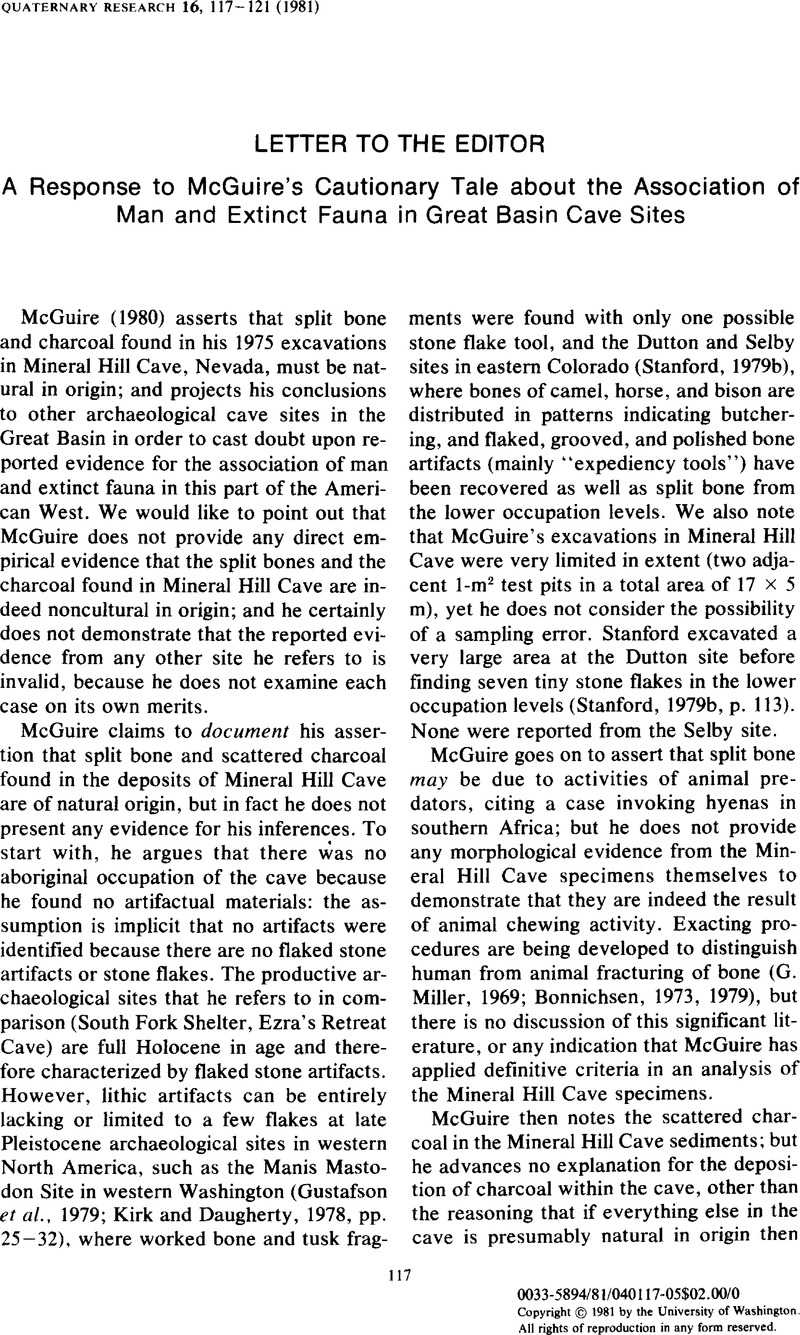Crossref Citations
This article has been cited by the following publications. This list is generated based on data provided by Crossref.
McGuire, Kelly R.
1982.
Reply to Gruhn and Bryan's Comments on “Cave Sites, Faunal Analysis, and Big-Game Hunters of the Great Basin: A Caution”.
Quaternary Research,
Vol. 18,
Issue. 2,
p.
240.
Dixon, E. James
1984.
Context and Environment in Taphonomic Analysis: Examples from Alaska's Porcupine River Caves.
Quaternary Research,
Vol. 22,
Issue. 2,
p.
201.





